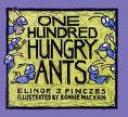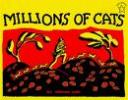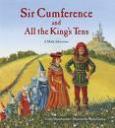Here are some books that can assist with the instruction of numbers and number sense. All of them are easy to read and provide excellent images to help students obtain a better understanding of numbers and their relation to place value.
One Hundred Hungry Ants written by Elinor J. Pinczes and illustrated by Bonnie Mackan is a story about one-hundred ants on their way to eat the food at a picnic. While traveling to the picnic one ant decides they will get there much faster if they divide into two rows of fifty. After walking for a short time the ant decides they should divide into four rows of twenty-five then five rows of twenty and finally ten rows of ten. This book is a good resource for a lesson introducing base-10 blocks
Greater Estimations by Bruce Goldstone is a picture book that asks students to estimate how many items are in each picture. The beginning of the book shows rubber duck in groups of ten and all the ducks lined up in a row of one-hundred. This book also uses popcorn kernels and groups of sky divers to give students a better understanding of number sense.
Millions of Cats by Wanda Gag is a story about a man who ventures out into the countryside to find a cat for his wife. Once there he finds hundreds and thousands of cats and decides to bring them all home. The cats get to his house and start to fight over which one of them is the prettiest and after all the fighting only one cat is left. This book is perfect for showing students how big and small numbers can be and the language is very easy to read.
More M&M’s Math written by Barbara Barbieri McGrath and illustrated by Roger Glass asks students to drop the candies out of their bag and use a graph to count the number of each color they have. This book is excellent for teaching ordinal numbers.
Sir Cumference and All The King’s Tens written by Cindy Neuschwander and illustrated by Wayne Geehan is a story about Sir Cumference and his wife Lady Di preparing to have a surprise birthday party for King Arthur. But things get out of hand when so many guests show up that they have trouble counting them all. They decide to make the guests stand in rows and columns to make the guests easier to count. The guests are then placed in tents with each tent representing a place value. This is a great book to read to students before a lesson on place value.
Websites for Kids
Hacker’s Numbers is a interactive online game that challenges students to make larger numbers than Hacker. The student must place a number in the hundreds, tens and ones. This game is allows students to practice place value.
The Cats in Line is an online activity that asks students to identify the ordinal number of the orange cat in a line of gray cats. This site is good for helping students gain an understanding of ordinal numbers and their relation to a set of objects.
The “Less Than” Lake Maze is a game that challenges students to help a monster cross a lake by jumping from one numbered stone to another stone with a lower number on it. If the students move to a larger number the monster falls in the lake.
Guess the Number is a game where the students can pick a number range (i.e. one to fifty) and then guess which number the computer has selected. With each turn the computer tells the student higher or lower and then provides a smaller range. The object of the game is to see how many turns it takes the student to guess the right number.
Enter Your Number is and interactive online math activity that allows students to enter any number then want that then have the computer tell them the place values of the numbers within the number. This site also has the option of generating a number for the student to challenge them.
Additional Resources
Bring It is an awesome online resource to support instruction for teaching one-to-one correspondence and other early elementary math skills such as addition, subtraction and even skip counting. This activity also offers a two player mode for students working in teams.
Estimation Exploration is an offline activity that asks student to estimate the amount of items in a jar or other container. This activity assists students with gaining number sense and uses physical objects such as shells, jelly beans or foam balls.
Counting Votes is another offline activity where the teacher asks students to help him/her create a list of vegetables on a large piece of paper. Then using small cups and counter chips the students get to vote for which vegetables are their favorites. The teacher writes the number of votes next to each vegetable and the students get to count their total number of votes for each vegetable.





